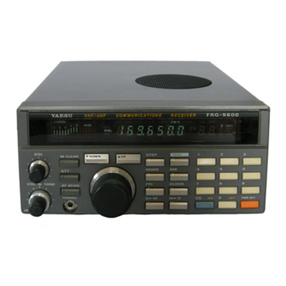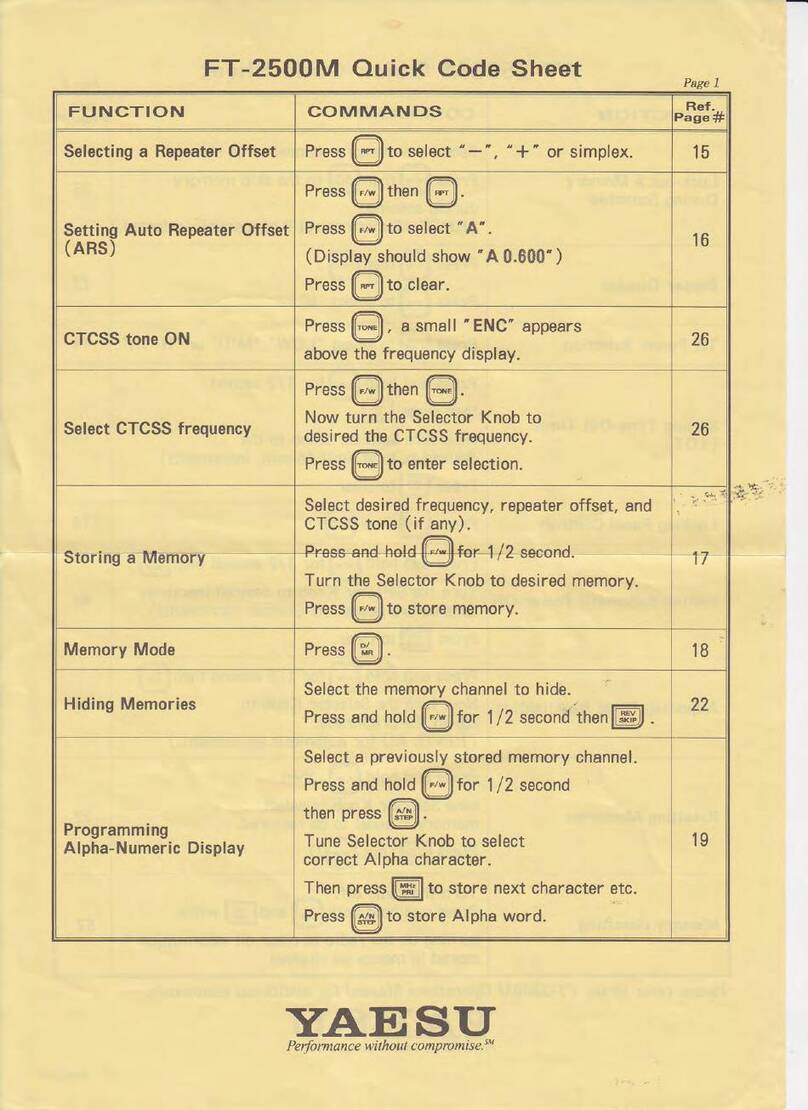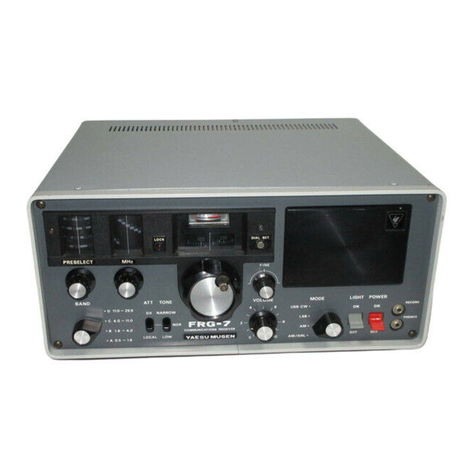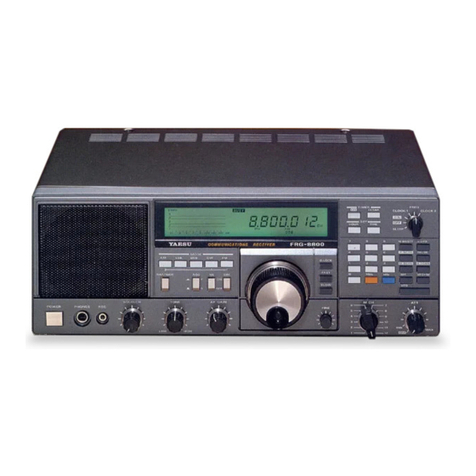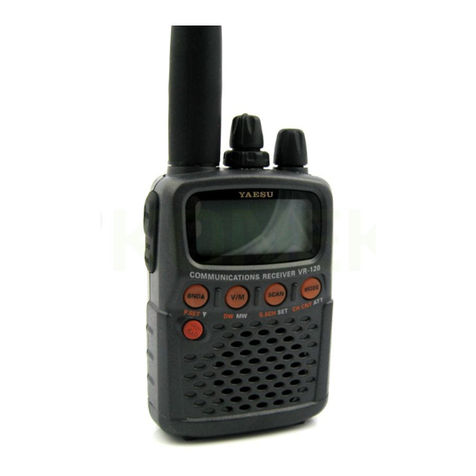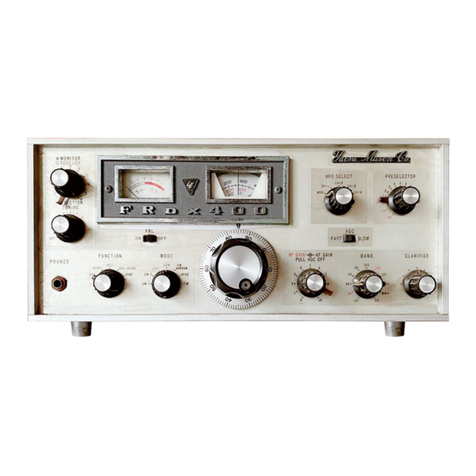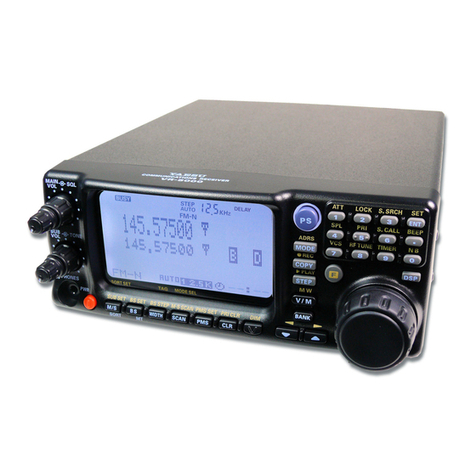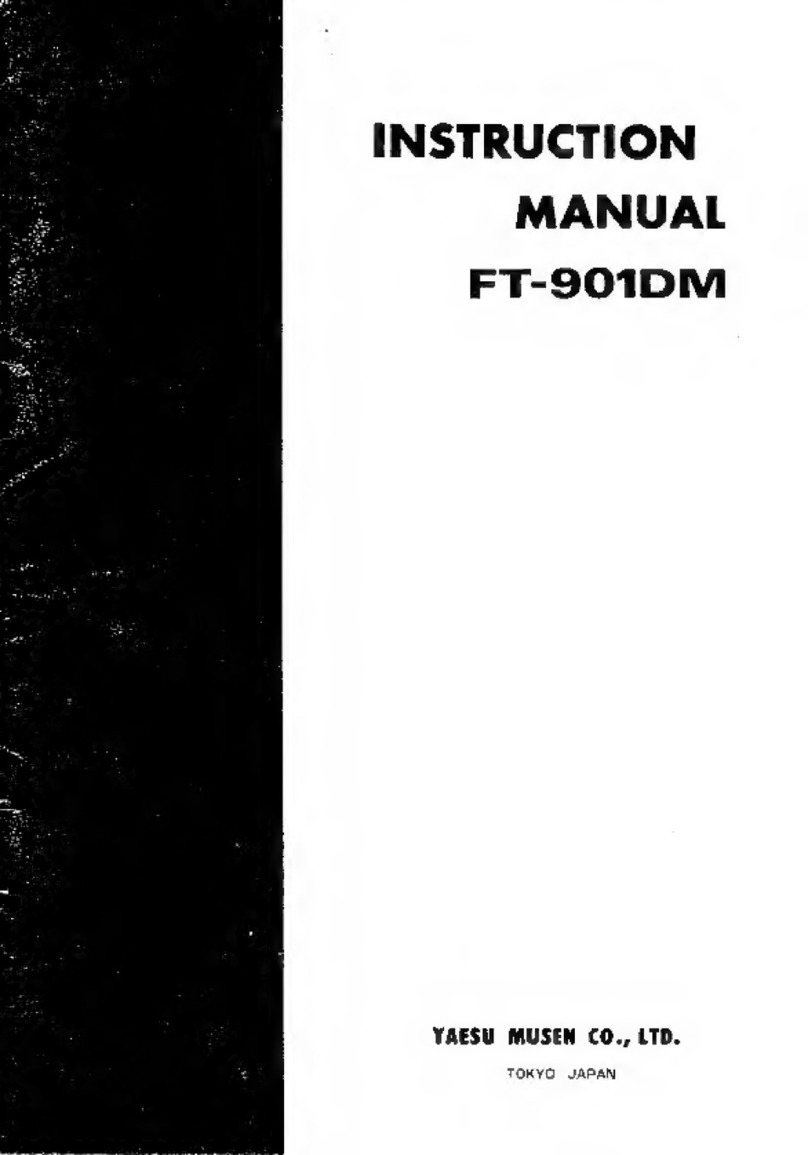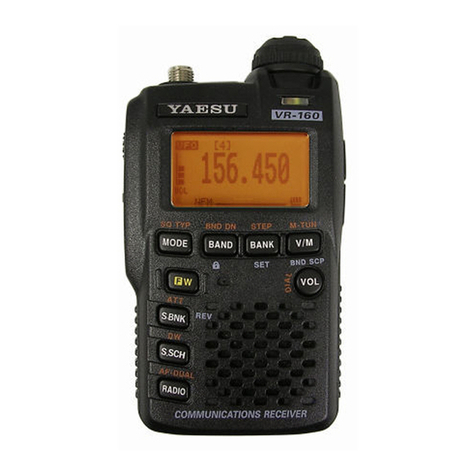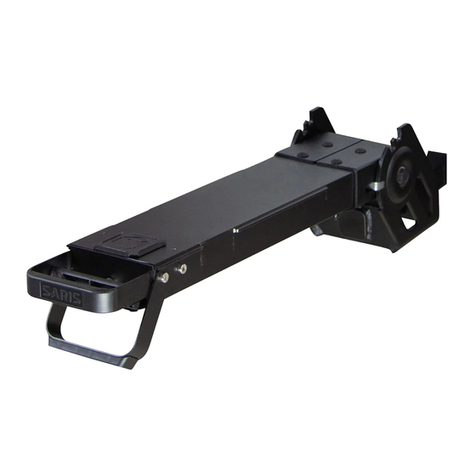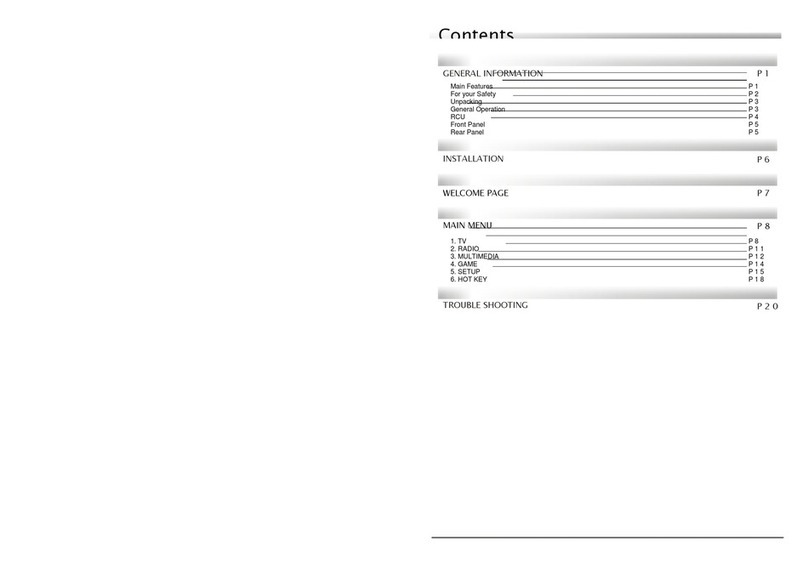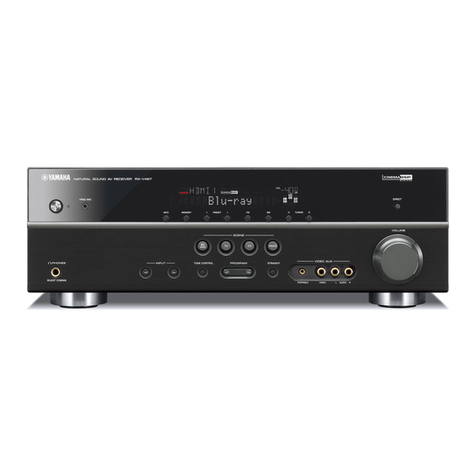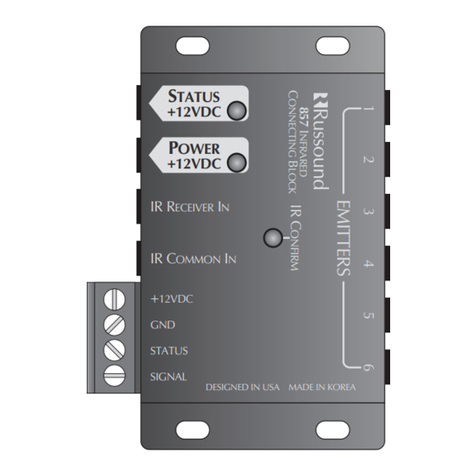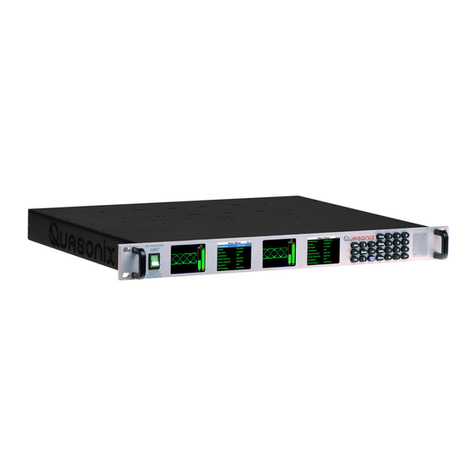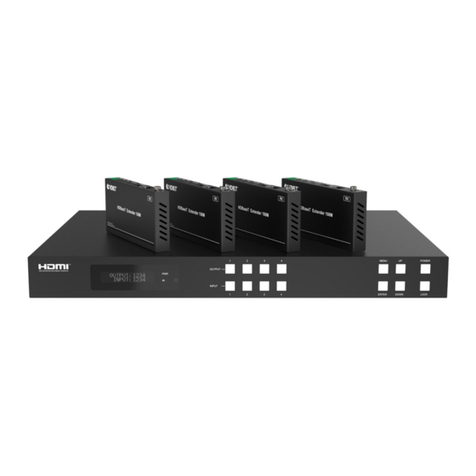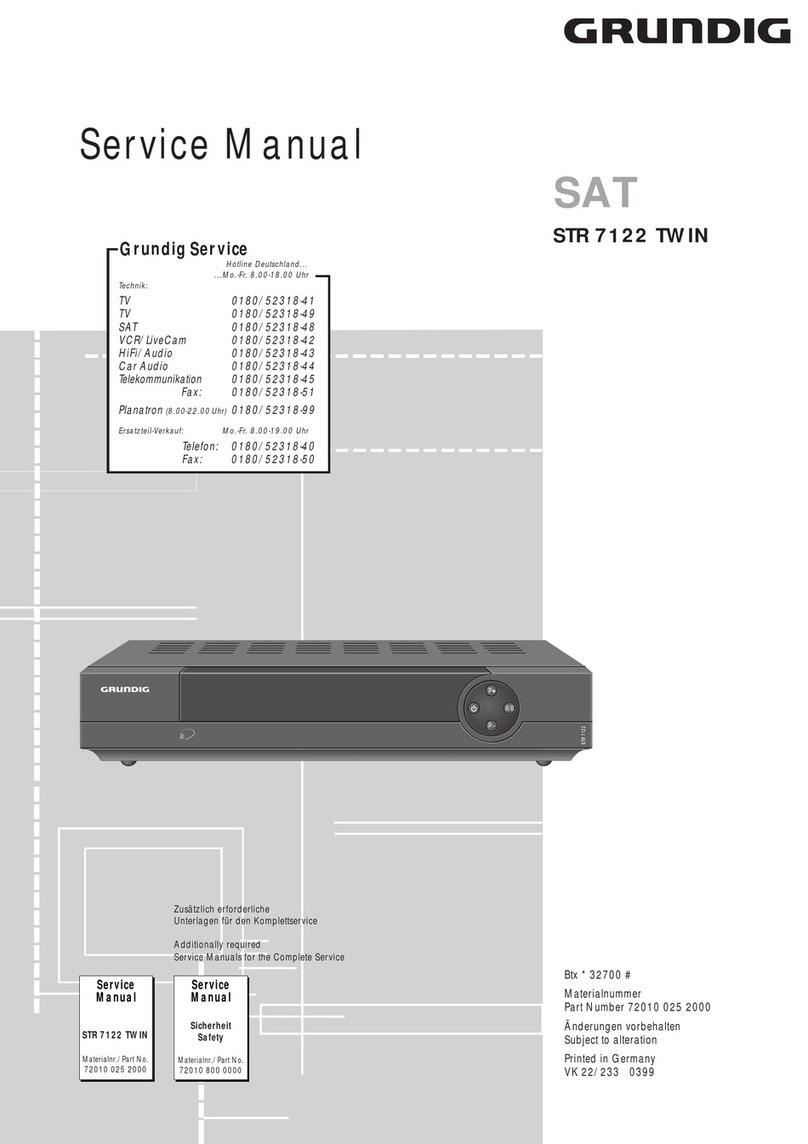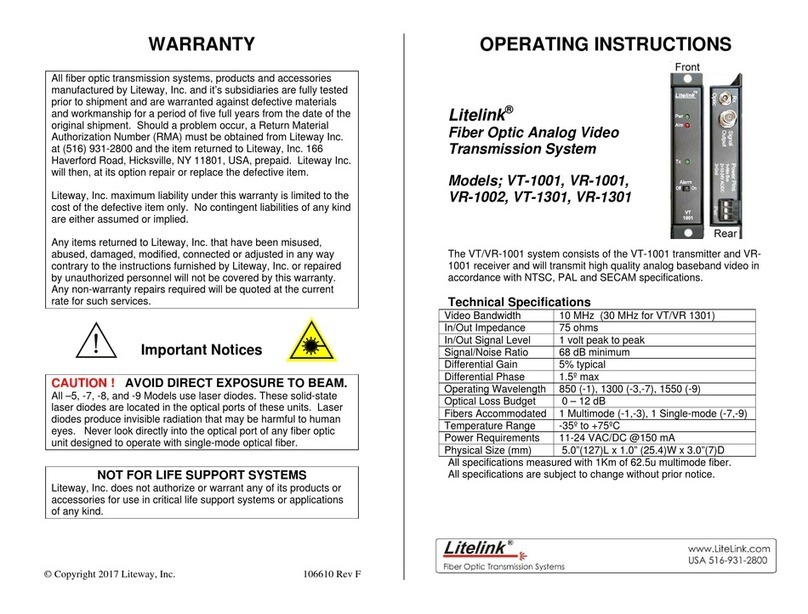Receiving the World Broadcast Stations
1. Press the [F] key momentarily, then press the [4(SPL)] key.
2. Rotate the DIAL knob to select the cursor to the “STATION CALL”menu, then press
the [ENT] key to recall the representation World Broadcast Station (refer to the
following list). Blink the small dot on the world atlas which means the
(approximately) location of its Broadcast Station.
3. Press the [BANK] key to select the desired Broadcast Station.
4. Rotate the DIAL knob or press the [τ(θ)/υ(π)] keys to select the Broadcast Station’s
frequency.
5. To disable the World Broadcast Station Receiving, press the [CLR(PRI CLR)] key,
then press the [ENT] key.
World Broadcast Stations List
Bank Display Station’s Name Frequency (MHz)
01 VOA Voice Of America 6.030/6.160/9.760/11.930
02 R-CANADA Radio Canada International 5.995/7.235/9.735/11.705
03 R-PORTUG Radio Portugal 9.780/11.960/15.555/21.655
04 SPAIN Radio Exterior de Espana 7.270/9.520/11.920/15.585
05 BBC British Broadcasting Corporation 6.195/9.410/12.095/15.310
06 R-FRANCE Radio France International 6.045/9.790/11.670/15.525
07 BELGIUM Radio Vlaanderen International 5.985/9.925/13.74/11.780
08 R-NEDERL Radio Nederland 5.955/6.020/9.620/11.655
09 R-LUXEMB Radio Luxembourg 6.090
10 D-WELLE Deutsche Welle 6.075/9.545/9.735
11 SWISS-R Swiss Radio International 3.985/6.165/9.885/15.220
12 R-NORWAY Radio Norway International 7.485/9.590/9.985/13.800
13 ITARY Italian Radio International (RAI) 6.060/7.175/9.515/17.710
14 R-DENMAR Radio Denmark 9.590/9.985/13.800/15.735
15 R-SWEDEN Radio Sweden 6.065/9.490/13.625/17.600
16 R-FINLAN Radio Finland 6.120/9.560/11.755/21.670
17 ISRAEL Israel Broadcasting Authority 9.435/11.585/15.340/17.535
18 RUSSIA Voice of Russia 5.905/5.920/7.205/12.030
19 INDIA All India Radio (AIR) 7.410/9.595/11.620/15.020
20 CHINA-R China Radio International (CRI) 7.190/9.535/9.855/11.945
21 R-KOREA Radio Korea 5.795/7.275/5.970/13.670
22 R-JAPAN Radio Japan 6.145/6.180/9.750/11.850


